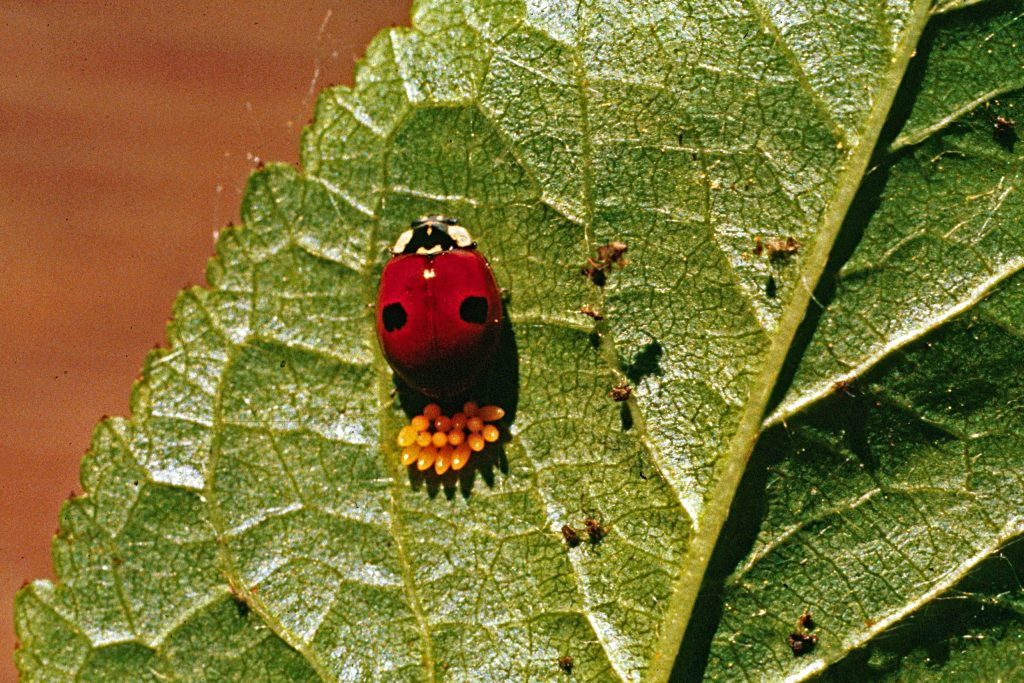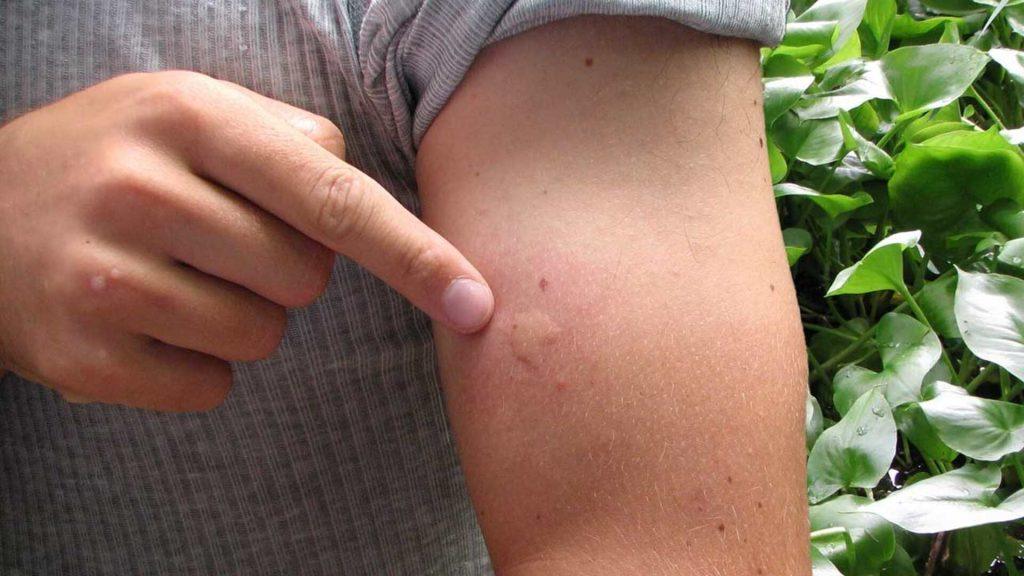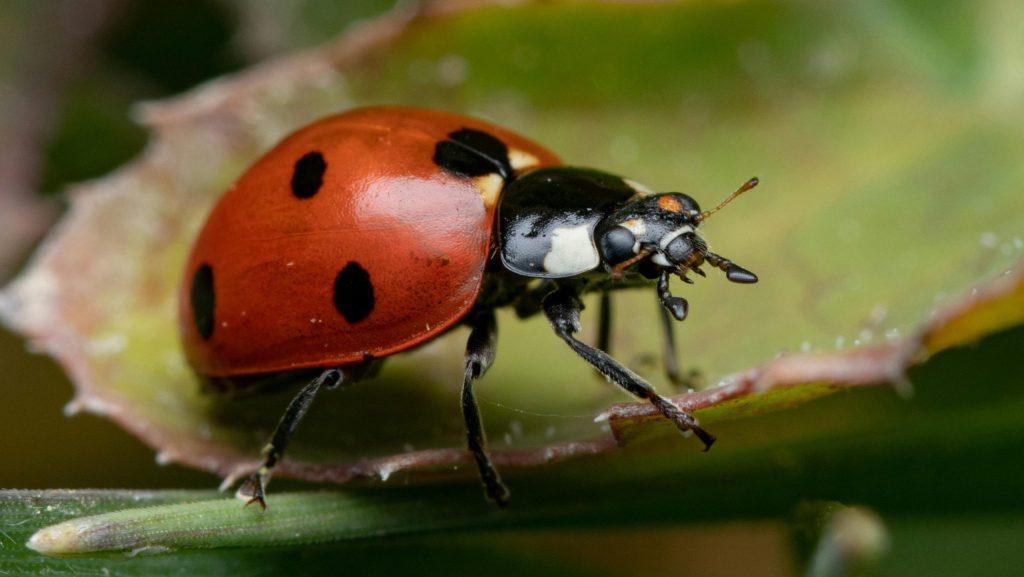Key Takeaways
- Ladybug bites are rare and usually harmless, causing mild irritation or redness.
- Biting may occur due to self-defense, dehydration, or environmental stress—especially in invasive species like Asian lady beetles.
- Asian lady beetles are more prone to bite and may release yellow fluid that irritates skin or causes allergic reactions.
- Ladybugs enter homes seeking warmth and food (like aphids) or are drawn to bright surfaces and pheromone trails.
- Prevent infestations by sealing entry points, maintaining garden hygiene, using repellents, and calling professionals if needed.
Do Ladybugs Bite?
 Yes, ladybugs can bite, but it’s rare and usually harmless to humans. Unlike other insects that bite for survival, ladybugs primarily bite in self-defense or under specific environmental conditions. Their bites are not venomous and do not transmit diseases, making them more of a nuisance than a threat.
However, some species, like the ladybug that bites—the Asian lady beetle (Harmonia axyridis)—are more likely to bite humans compared to native ladybugs. These beetles are known for their invasive behavior and can sometimes cause irritation when they bite. If you suspect a ladybug infestation, do not panic and get in touch with a professional pest control service to get rid of ladybugs effectively.
Yes, ladybugs can bite, but it’s rare and usually harmless to humans. Unlike other insects that bite for survival, ladybugs primarily bite in self-defense or under specific environmental conditions. Their bites are not venomous and do not transmit diseases, making them more of a nuisance than a threat.
However, some species, like the ladybug that bites—the Asian lady beetle (Harmonia axyridis)—are more likely to bite humans compared to native ladybugs. These beetles are known for their invasive behavior and can sometimes cause irritation when they bite. If you suspect a ladybug infestation, do not panic and get in touch with a professional pest control service to get rid of ladybugs effectively.
Why Do Ladybugs Bite?
There are specific reasons why a ladybug might bite you:Reasons Why Ladybugs May Bite
-
Seeking Moisture or Food: Ladybugs may nibble on human skin to extract moisture or salt, particularly if they are dehydrated or in need of nutrients.
-
Defense Mechanism: When handled or threatened, ladybugs may bite as a form of self-defense. This behavior is more common in invasive species like the Asian lady beetle.
-
Environmental Stress: During colder months, ladybugs often enter homes in search of warmth. Overcrowding or stress within these temporary shelters can make them more likely to bite.
What Does A Ladybug Bite Look Like?


Not getting a solution?
Get your free pest control estimate today!Symptoms of a Ladybug Bite
-
Small Raised Bump: The bite typically results in a small, slightly raised bump that may resemble a mosquito bite or a pimple.
-
Redness: The area around the bite may appear red or irritated.
-
Minimal Swelling: There might be slight swelling, but it’s usually not significant.
-
No Puncture Marks: Unlike bites from insects like mosquitoes, a ladybug bite usually does not leave visible puncture marks.
Symptoms of Ladybug Bites
- If you think you have been bitten by a ladybug, here are the symptoms to look for:
-
Skin Irritation: A small, red ladybug bite mark may appear at the site of the bite, similar to a pinprick.
-
Itching or Burning: Some people may experience mild itching or a slight burning sensation.
-
Allergic Reactions (Rare): In sensitive individuals, bites may lead to swelling, rashes, or other allergic symptoms.

Are Ladybug Bites Dangerous?
In most cases, ladybug bites are harmless and do not require medical attention. However, bites from the Asian lady beetle may cause more noticeable irritation due to the species’ chemical defense mechanism. Asian lady beetles secrete a yellowish fluid when disturbed, which can stain surfaces and cause skin irritation or allergic reactions in some people. Now that we have understood why ladybugs bite and how dangerous their bite is, let’s find out why ladybugs infest homes and how to prevent an infestation.Causes of a Ladybug Infestation
 Ladybugs enter homes or gather in large numbers for several reasons:
Ladybugs enter homes or gather in large numbers for several reasons:
Why Ladybugs Invade Homes
-
Seeking Warmth: As temperatures drop in fall and winter, ladybugs look for warm, sheltered areas to survive. They often find entry points through cracks in windows, doors, or walls.
-
Presence of Food Sources: Gardens with an abundance of aphids or other pests can attract ladybugs. Over time, these beneficial insects may move closer to your home.
-
Scent of Old Hives: The smell of pheromones from previous infestations can lure ladybugs back to the same area year after year.
-
Bright Surfaces: Ladybugs are attracted to light-colored or reflective surfaces, like white walls or windows, which they mistake for sunlight.
Prevent Ladybug Bites & Infestations
- Prevention is the best strategy when it comes to ladybug bites and infestations. Here are practical steps to keep ladybugs away from your home:
-
Seal Entry Points: Apply caulk to cracks around windows, doors, and walls; install mesh screens over vents and chimneys to block access.
-
Maintain Your Garden: Trim plants, manage aphid populations, and avoid overwatering to limit food and shelter for ladybugs.
-
Use Natural Repellents: Spray citrus or peppermint oil near entryways and scatter diatomaceous earth where ladybugs tend to gather.
-
Keep Indoor Spaces Clean: Vacuum frequently and secure food and trash to avoid attracting ladybugs and other pests indoors.
-
Use Light Traps: Place light traps near windows or doors to attract and capture ladybugs for safe removal.
Myths and Facts About Ladybug Bites
| Myth | Fact |
|---|---|
| Ladybugs are entirely harmless and never bite. | Ladybugs rarely bite, but they can nip human skin, especially in search of moisture or when threatened. |
| All ladybugs are beneficial and should never be removed. | While many ladybugs help control pests, invasive species like the Asian lady beetle can cause problems and may require removal. |
| Ladybug bite marks are dangerous and venomous. | Ladybug bite marks are not venomous and rarely cause more than minor irritation. |
| Ladybugs only infest dirty or unkempt homes. | Ladybugs invade homes seeking warmth and shelter, regardless of cleanliness. |
| DIY methods are always enough to handle a ladybug infestation. | Larger infestations often require professional pest control for complete removal. |





